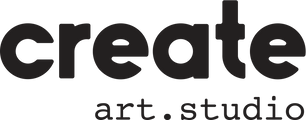Child Safety

✅ 1. Statement of Commitment to Child Safety
At Create Art Studio, we are committed to the safety, wellbeing and empowerment of all children who attend our programs.
We have zero tolerance for child abuse and take all concerns and allegations seriously. Our staff, volunteers and contractors are committed to protecting children from harm and fostering a safe, inclusive and creative environment.
We support and respect all children, including Aboriginal and Torres Strait Islander children, children from culturally and linguistically diverse backgrounds, children with disabilities, and LGBTQIA+ children.
Every person involved with our studio is responsible for promoting child safety and wellbeing — through their actions, words, and values.
✅ 2. Child Safe Policy
Our Child Safe Policy outlines how Create Art Studio ensures the safety of every child participating in our art classes and after-school programs.
Key Principles:
- Children have the right to feel safe, be respected, and have their voices heard.
- We provide culturally safe and inclusive spaces for all children.
- We prioritise early identification and prevention of risks to child safety.
This policy includes:
- Definitions of child abuse and neglect (physical, emotional, sexual, neglect, grooming).
- Responsibilities of staff and volunteers.
- Steps for responding to concerns or disclosures.
- Processes to include children’s feedback in shaping our programs.
- Alignment with legislation, including the NSW Child Safe Standards and Working with Children Check requirements.
We review this policy annually and whenever a significant change occurs in the studio’s operation.
✅ 3. Child Safe Code of Conduct
This Code of Conduct outlines expectations for how adults at Create Art Studio interact with children.
✔ Acceptable Behaviour:
- Actively listening to children and valuing their input.
- Treating children with respect, regardless of their background or abilities.
- Maintaining appropriate physical and emotional boundaries.
- Encouraging children to speak up if they feel uncomfortable or unsafe.
- Reporting all concerns about child safety promptly.
✘ Unacceptable Behaviour:
- Using intimidating, threatening or demeaning language or actions.
- Developing special relationships with a child outside studio activities.
- Taking photos or videos of children without prior written consent.
- Being alone with a child in a private setting without visibility.
- Failing to report a concern or breach of conduct.
All staff and volunteers must read, understand and sign this Code before engaging in studio activities.
✅ 4. Child Safe Complaint Handling Policy
This procedure ensures that all concerns, complaints, or disclosures are taken seriously and addressed promptly.
Reporting a concern:
- Anyone (child, parent, staff or volunteer) can raise a concern about a child’s safety or wellbeing.
- Report concerns to the Child Safety Officer (Anna, Studio Director) either in person, via phone or in writing.
- Anonymous concerns are accepted where possible.
Response process:
- All disclosures are acknowledged respectfully and confidentially.
- Immediate safety of the child is prioritised.
- Reports are documented clearly and factually.
- If needed, external authorities (e.g. Police or Child Protection) are notified.
- Ongoing support is provided to the child and involved parties.
Retaliation or victimisation of anyone making a complaint is strictly prohibited.
✅ 5. Child Safe Recruitment Policy
Create Art Studio is committed to recruiting safe, responsible and values-aligned individuals.
All recruitment involves:
- Working with Children Check (WWCC) verification.
- Reference checks, including child safety-related questions.
- Interviews that explore values, attitudes, and past behaviour around children.
- A signed Code of Conduct and thorough induction process.
Induction includes:
- Overview of Child Safe Policies and Reporting Procedures.
- Expectations around safe conduct.
- Guidance on boundaries, supervision, and communication.
We continue to build a culture of safety through ongoing reflection and training.
✅ 6. Child Safe Risk Management Plan
We identify, assess and minimise risks to children in all aspects of our operations.
Example Risks & Strategies:
|
Risk |
Control Measures |
|
One-on-one time with children |
Open-door policy; avoid 1:1 settings unless observable by others. |
|
Bathroom use |
Clear supervision policy; ensure children use bathroom in pairs. |
|
Art materials/supplies |
Non-toxic supplies only; safety briefing on all tools and equipment. |
|
Photography and video |
Only with signed parental consent; no tagging children online. |
|
Emotional safety |
Promote kindness, inclusive language, and manage group dynamics. |
This plan is reviewed annually, or if a new activity introduces new risk.
🔺 High-Risk Activity: Bathroom Access
Risk:
Children must leave the supervised studio space to access the bathroom, creating potential risks such as:
- Lack of immediate adult supervision.
- Contact with unfamiliar adults.
- Opportunity for harm or distress without observation.
Risk Level:
Moderate to High — due to movement outside direct supervision.
Control Measures:
- Children are encouraged to go in pairs (buddy system).
- A designated adult monitors entry/exit when bathroom breaks are taken.
- A visual check-in system is used so staff know who is out of the room.
- Regular reminders during class about safe bathroom practices.
- If a child is distressed, an adult may accompany them to the bathroom door (while maintaining appropriate boundaries and visibility).
Review Notes:
- This arrangement is revisited at each term start or when location setup changes.
- Parents are informed of this risk and control strategy upon enrolment.


